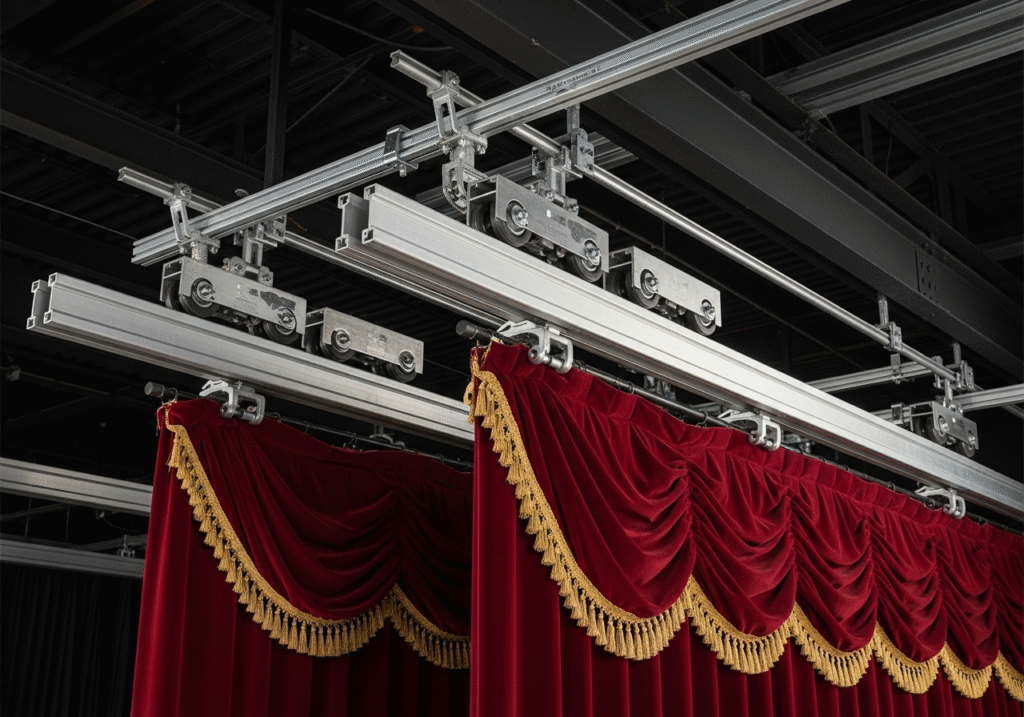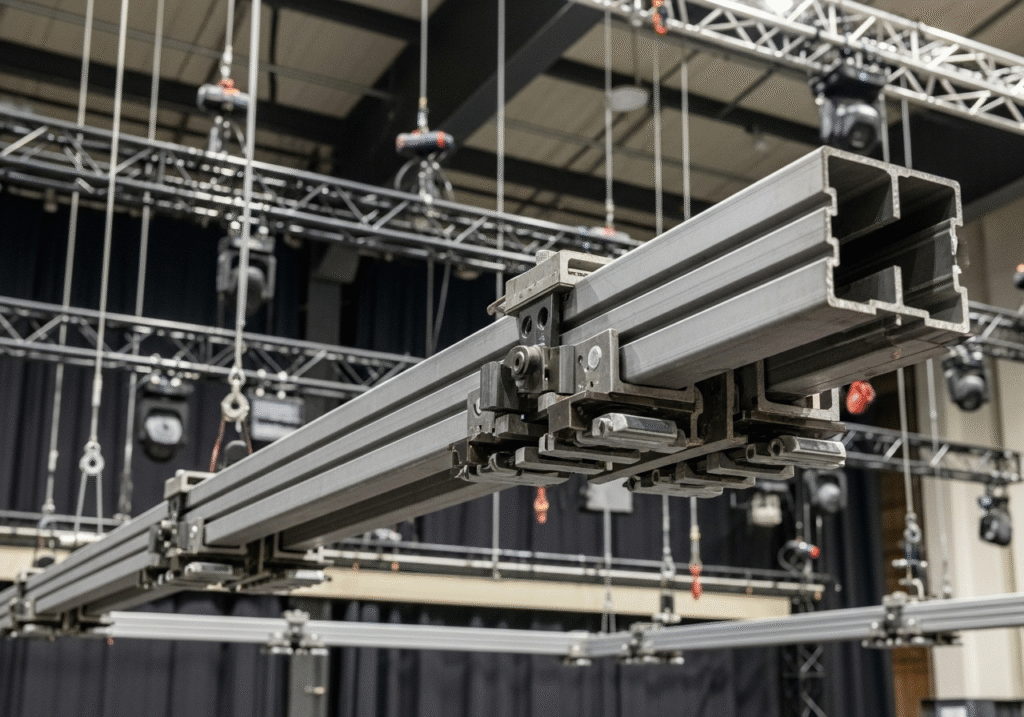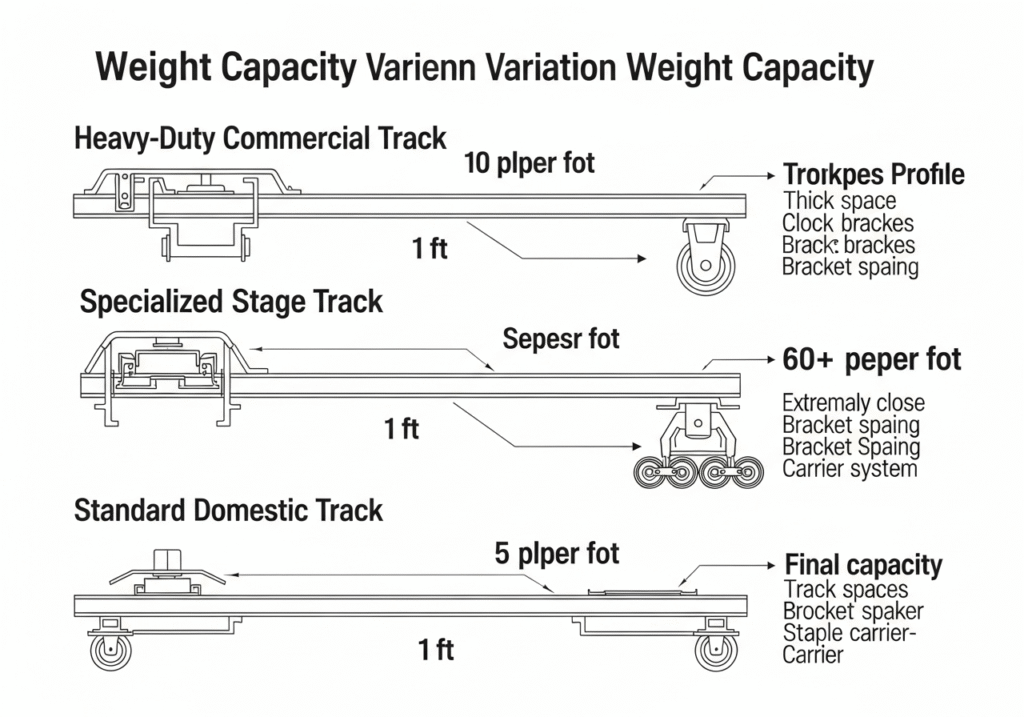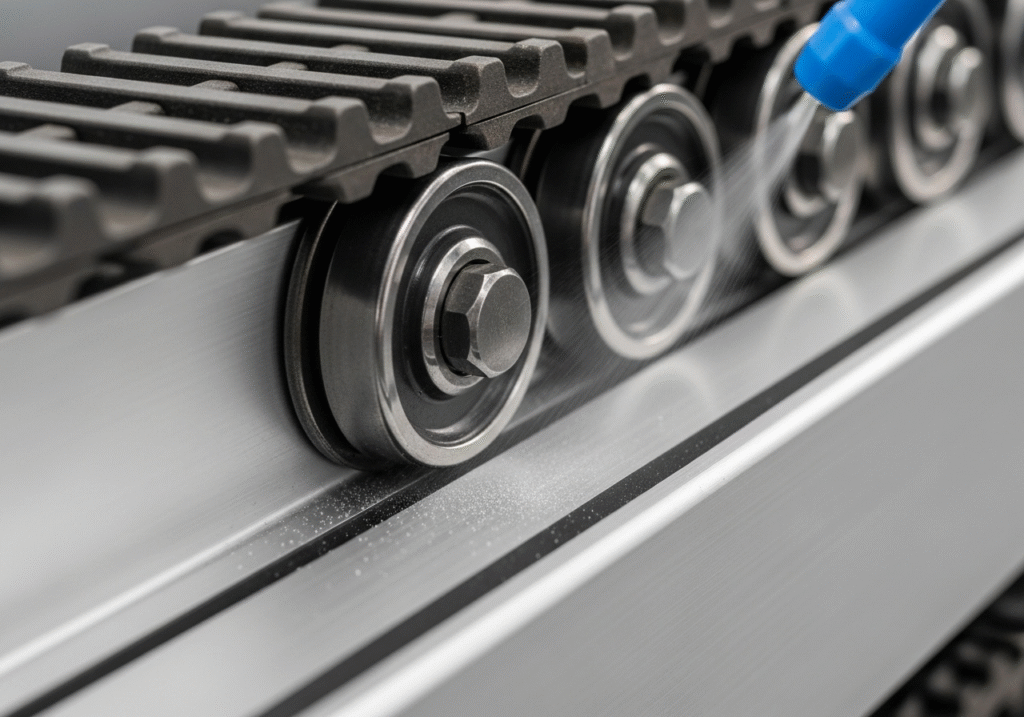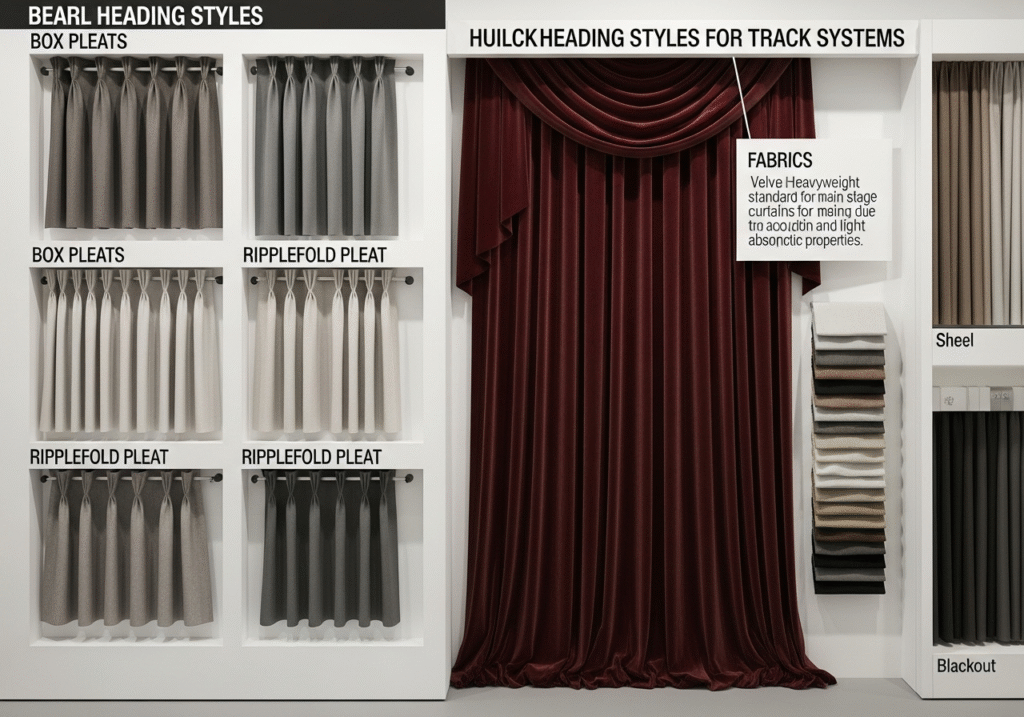What Types of Curtain Tracks Are Best for Large Venues?

Choosing the wrong curtain track in a large venue can be a disaster. A track that jams, squeaks, or fails under a heavy curtain can ruin a performance or event.
For large venues, the best options are commercial-grade stage tracks or heavy-duty box tracks. These are made from thick, extruded aluminum and are designed to support extremely heavy and tall curtains while ensuring smooth, reliable operation.
From my years on the factory floor, I learned that a track for a theater or an arena is an entirely different beast from a residential one. It's structural engineering. A purchasing manager like Matt isn't just buying a piece of hardware; he's investing in a critical piece of stage machinery that has to perform flawlessly every single time. It needs to handle curtains that can weigh hundreds, sometimes thousands, of pounds. The focus is entirely on strength, durability, and absolute reliability, because in a live venue, there are no second chances.
What types of curtain tracks are best for supporting heavy curtains?
A standard track will bend or break under the immense weight of stage or acoustic curtains. This not only destroys the curtains but also poses a serious safety risk.
Heavy-duty extruded aluminum or steel stage tracks are the only options for supporting heavy curtains. These systems use a box or I-beam profile for maximum rigidity and are paired with specialized, high-capacity carriers.
When dealing with heavy curtains, the conversation starts and ends with the track's material and profile. From my experience building these systems, there’s no room for compromise. The best choice is almost always a track made from thick, structural-grade extruded aluminum. While steel is also used, aluminum offers an excellent strength-to-weight ratio and is resistant to rust, making it ideal for most venues.
The shape of the track is just as important as the material. We design them with a box or I-beam profile. This geometry provides incredible rigidity and prevents the track from sagging under load, even over very long spans. For the heaviest applications, like main stage curtains in a large auditorium, you'll need a dedicated stage track system. These are not just tracks; they are complete systems engineered for the massive weight and constant use demanded by professional venues.
| Track Type | Best For | Key Advantage |
|---|---|---|
| Heavy-Duty Box Track | Conference rooms, banquet halls | Strong, versatile, and easily concealed. |
| I-Beam Stage Track | Theaters, auditoriums, arenas | Extremely high weight capacity and durability. |
| Walk-Along Track | Black box theaters, smaller stages | Simple, reliable manual operation for heavy drapes. |
How much weight can heavy-duty curtain tracks hold?
Under-specifying a track's weight capacity is a critical failure point. You risk the entire system collapsing, causing damage and danger. The specifications can be confusing, making it hard to choose correctly.
The weight capacity varies greatly, from 10 pounds per foot on a heavy-duty commercial track to over 60 pounds per foot on a specialized stage track. The final capacity depends on the track profile, bracket spacing, and carrier type.
This is a question I get all the time, and the answer is always: "it depends." There isn't one single number. The load capacity is a system, not just a single component. I always advise partners like Matt to look at three things to determine the true strength of their setup.
First is the track itself. A heavy-duty, thick-walled aluminum track is the foundation. Second, and this is the part people often forget, is the mounting. The distance between support brackets is crucial. The closer the brackets are together, the more weight the track can hold. For a very heavy curtain, you might space brackets every 2-3 feet, securing them directly into a steel beam or concrete. The third factor is the carriers. Ball-bearing or wheeled carriers designed for heavy loads can individually support 25-50 pounds each, distributing the curtain's weight effectively across the track. When combined, a properly specified and installed system can easily handle curtains weighing well over 1,000 pounds.
How can you make a curtain track smoother?
A heavy stage curtain that jerks, sticks, or makes noise is unprofessional and distracting. This rough operation also puts extra strain on the track, motor, and fabric, leading to premature wear.
To make a track smoother, use high-quality ball-bearing or wheeled carriers and keep the track channel clean. Applying a light spray of dry silicone lubricant can also dramatically reduce friction without attracting dust.
In a performance venue, silence and smoothness are everything. The magic on stage can be instantly broken by a squeaky curtain. Based on my years of troubleshooting systems, achieving a smooth glide comes down to two things: using the right components and performing basic maintenance.
The single biggest upgrade for smoothness is the carrier. Standard plastic glides just don't work for heavy curtains. You need carriers with wheels. For the absolute best performance, ball-bearing carriers are the gold standard. They are little pieces of precision engineering designed to roll, not slide, which minimizes friction to almost nothing. This allows even the heaviest curtains to be moved with minimal effort, whether by hand or by a motor.
Maintenance is the other key. Track channels can accumulate dust and debris, which will cause even the best carriers to bind up. A regular cleaning with a cloth or a vacuum attachment is essential. If lubrication is needed, never use oil-based products like WD-40. They attract dust and create a sticky mess. The correct choice is a dry silicone spray. A light mist inside the track channel creates a slick, friction-free surface that doesn't attract grit.
What type of curtain is best for track systems in large venues?
Not all curtains are made for track systems. Using the wrong curtain header or fabric can lead to poor function, an unprofessional appearance, and damage to the curtain or track.
The best curtains for track systems are those with heading styles like box pleats or ripplefold pleats. The fabric choice depends on the function, with heavyweight velvet being standard for main stage curtains requiring acoustic properties.
The curtain and the track have to work together as a single system. Sourcing the world's best track is pointless if the curtain isn't designed to hang on it properly. The conversation should always start with the curtain's purpose.
Function and Fabric
What does the curtain need to do? If it’s a main stage proscenium curtain, you need a heavy, opaque fabric like velour or velvet. These fabrics provide excellent light-blocking (blackout) and sound-dampening (acoustic) properties. If the curtain is for a simple room divider in a convention center, a lighter, more durable inherently flame-retardant (IFR) fabric might be more practical and cost-effective.
Heading Style and Hardware
The top of the curtain, or the "heading," is critical. It determines how the curtain attaches to the track's carriers.
| Heading Style | Description | Best for Venues? |
|---|---|---|
| Pinch Pleat | Classic, sewn-in pleats. Attaches with pin hooks. | Yes, a traditional and durable choice. |
| Box Pleat | Tailored, flat pleats. Also uses pin hooks. | Yes, offers a clean, modern look. |
| Ripplefold | Fabric hangs in soft, flowing 'S' curves. | Yes, very popular for a modern, uniform look. |
| Grommet Top | Metal rings in the fabric; for rods only. | No, not suitable for track systems. |
Ripplefold curtains are especially popular in modern venues. They use special snap-tape sewn to the curtain and snap-on carriers, which creates a perfect, consistent wave from top to bottom. It's a clean, architectural look that operates very smoothly.
Conclusion
The best curtain track for a large venue is a heavy-duty, engineered system. It must be chosen based on weight, smoothness, and perfect compatibility with the curtain it will support.
